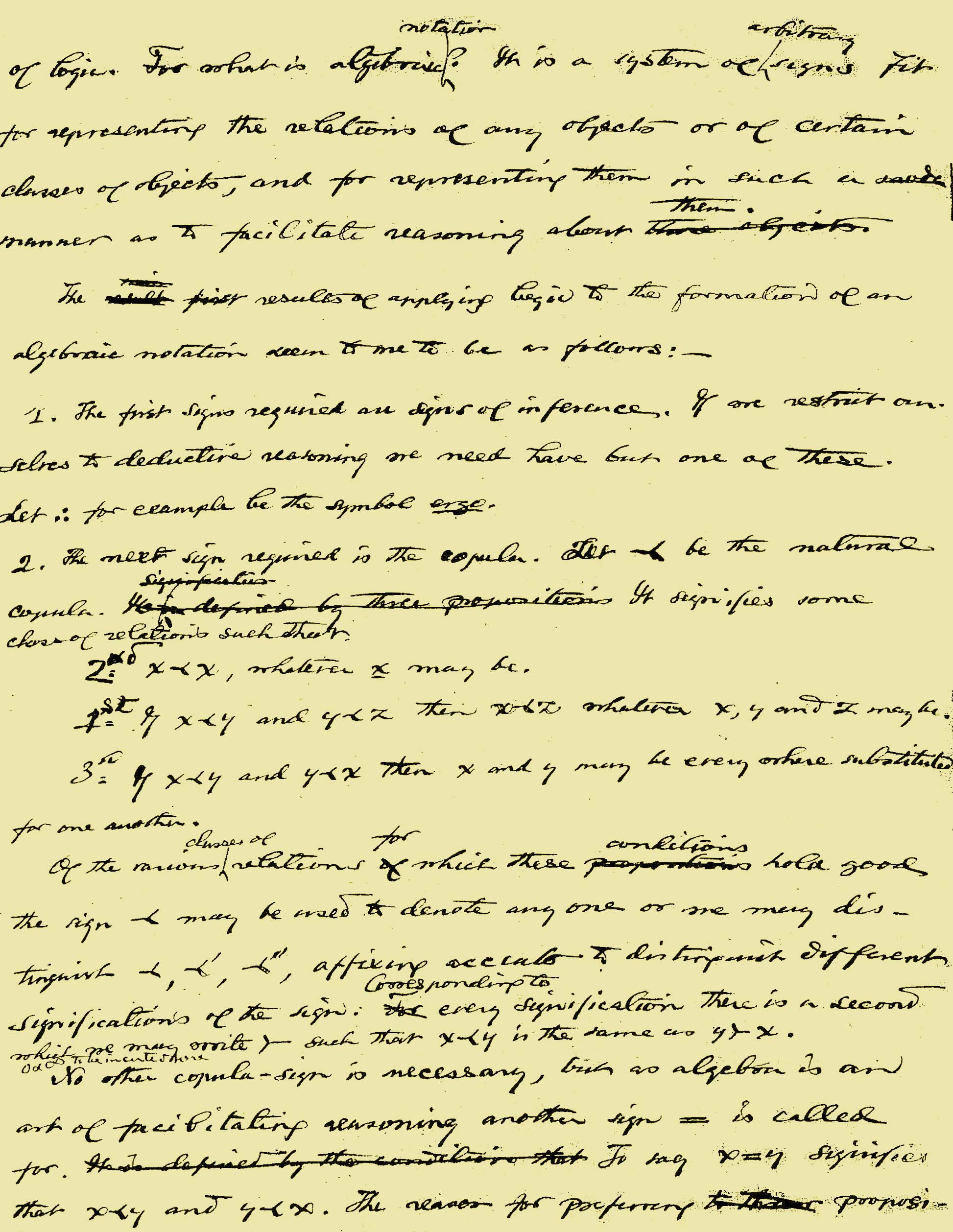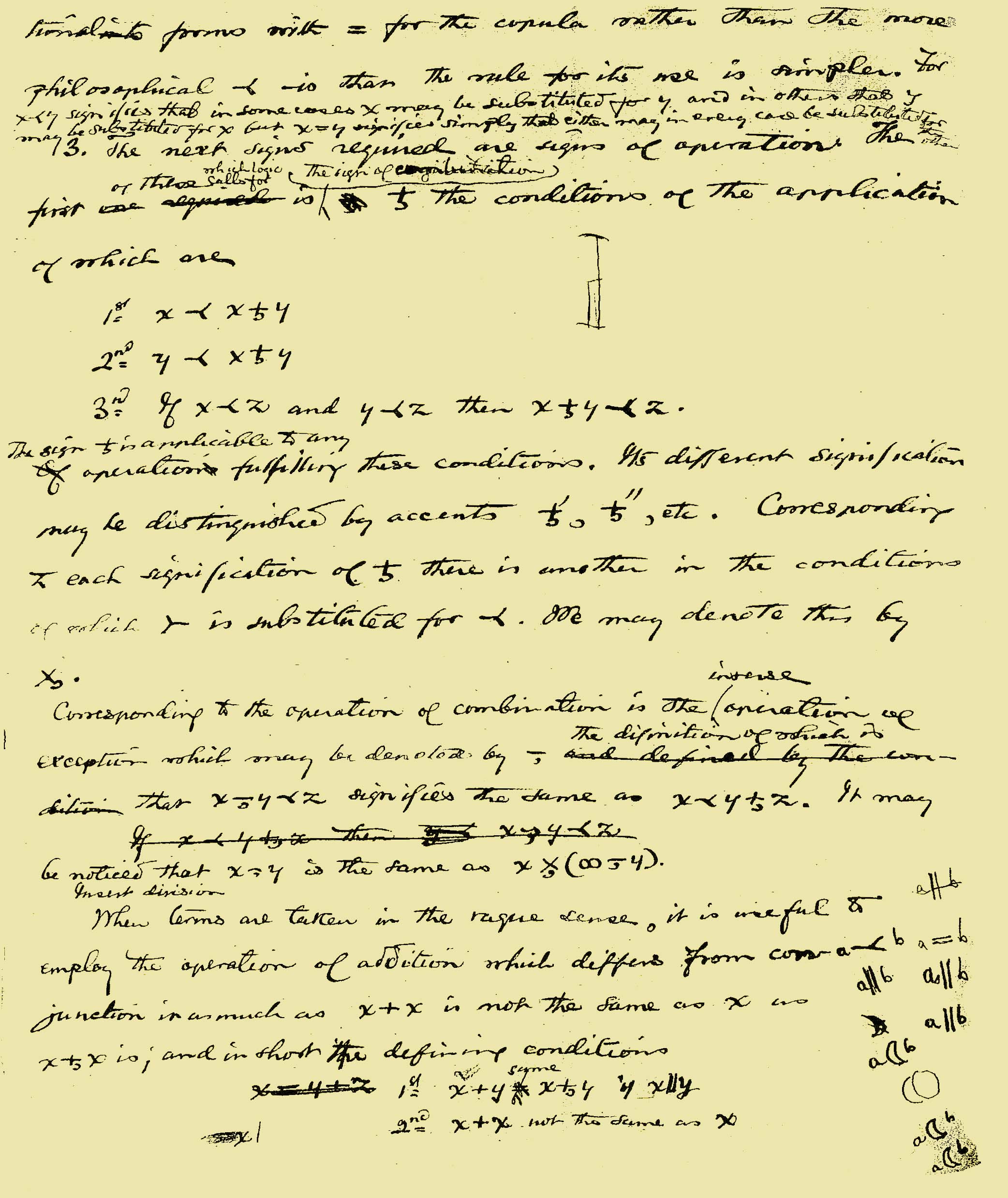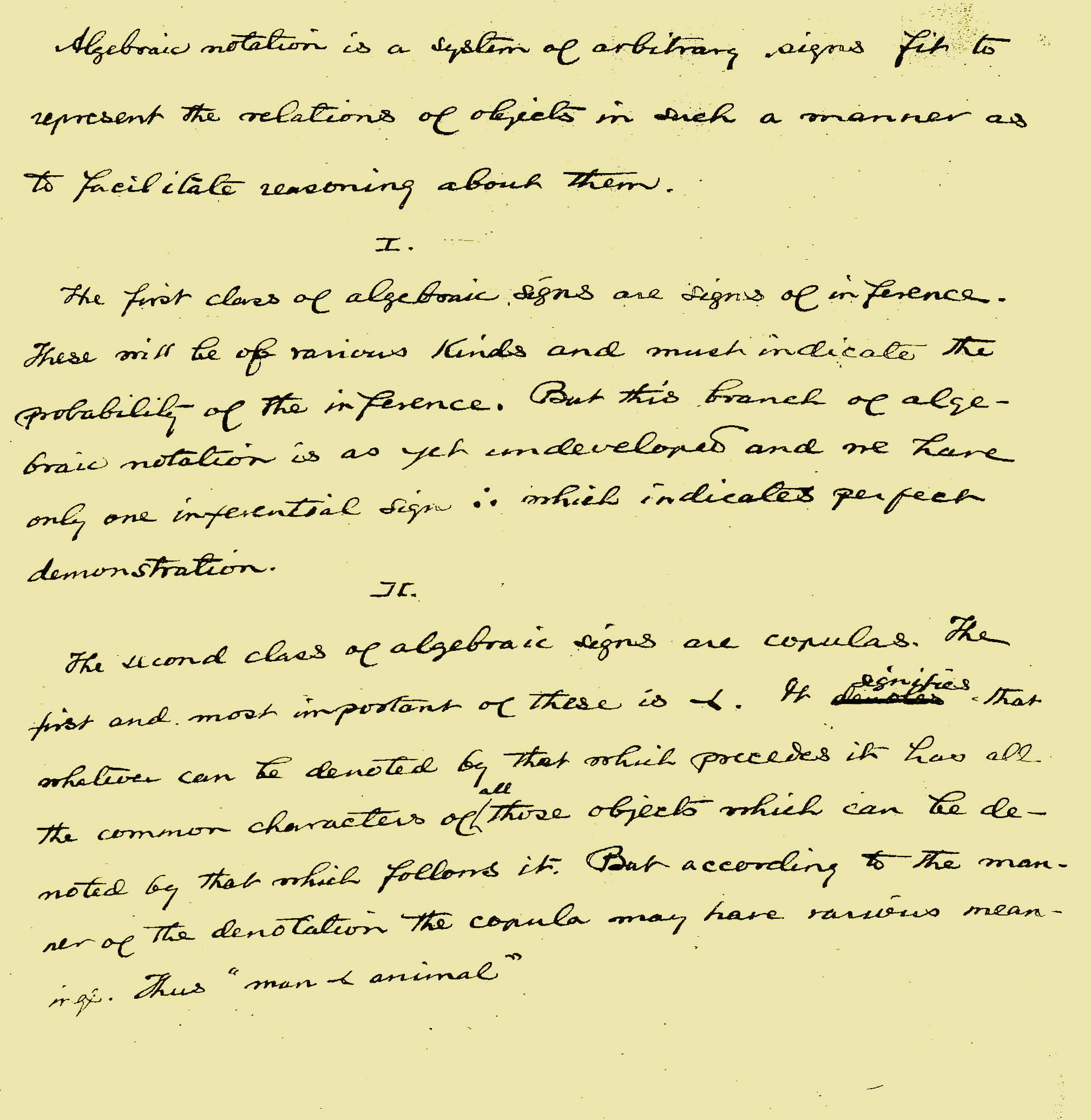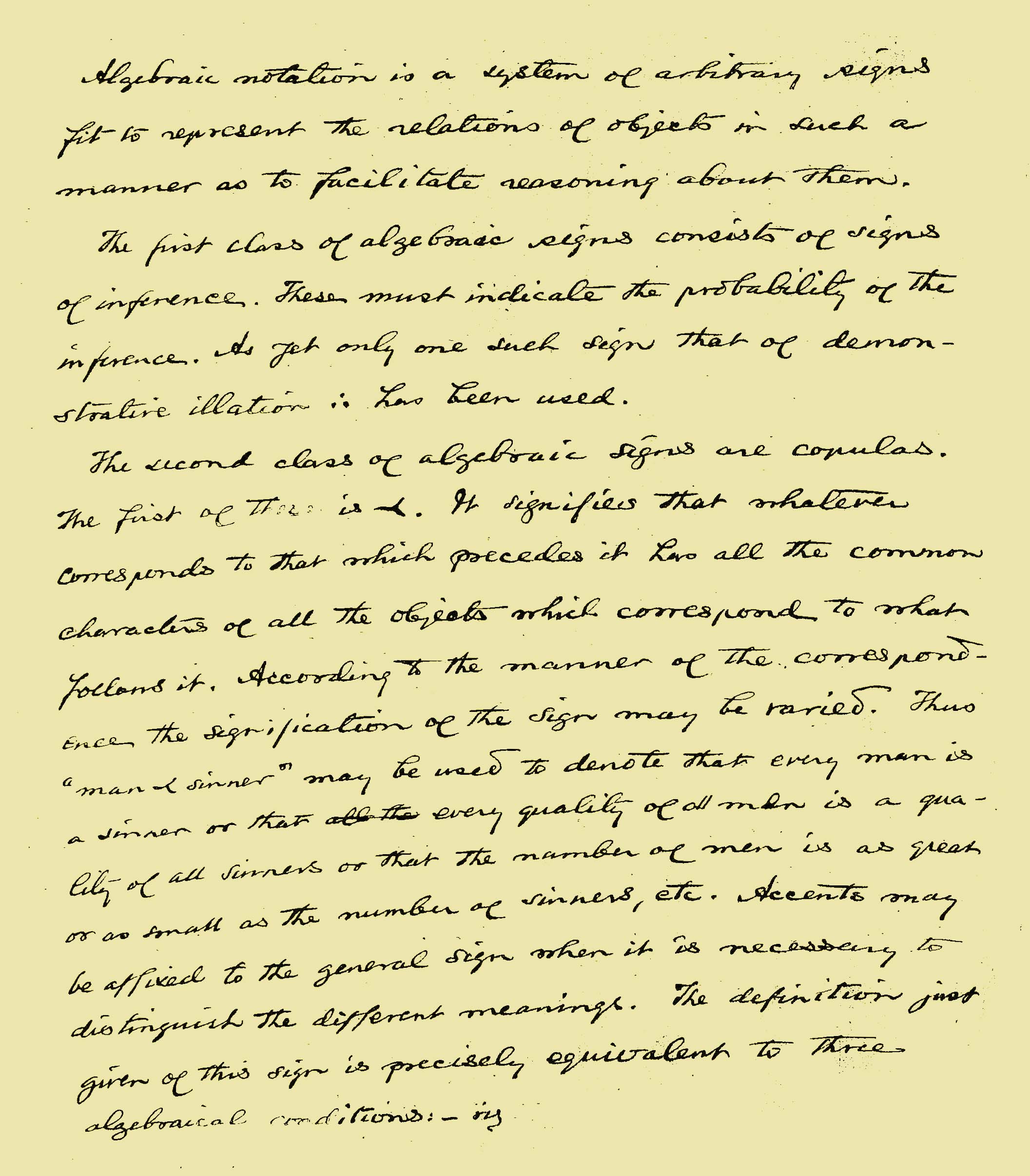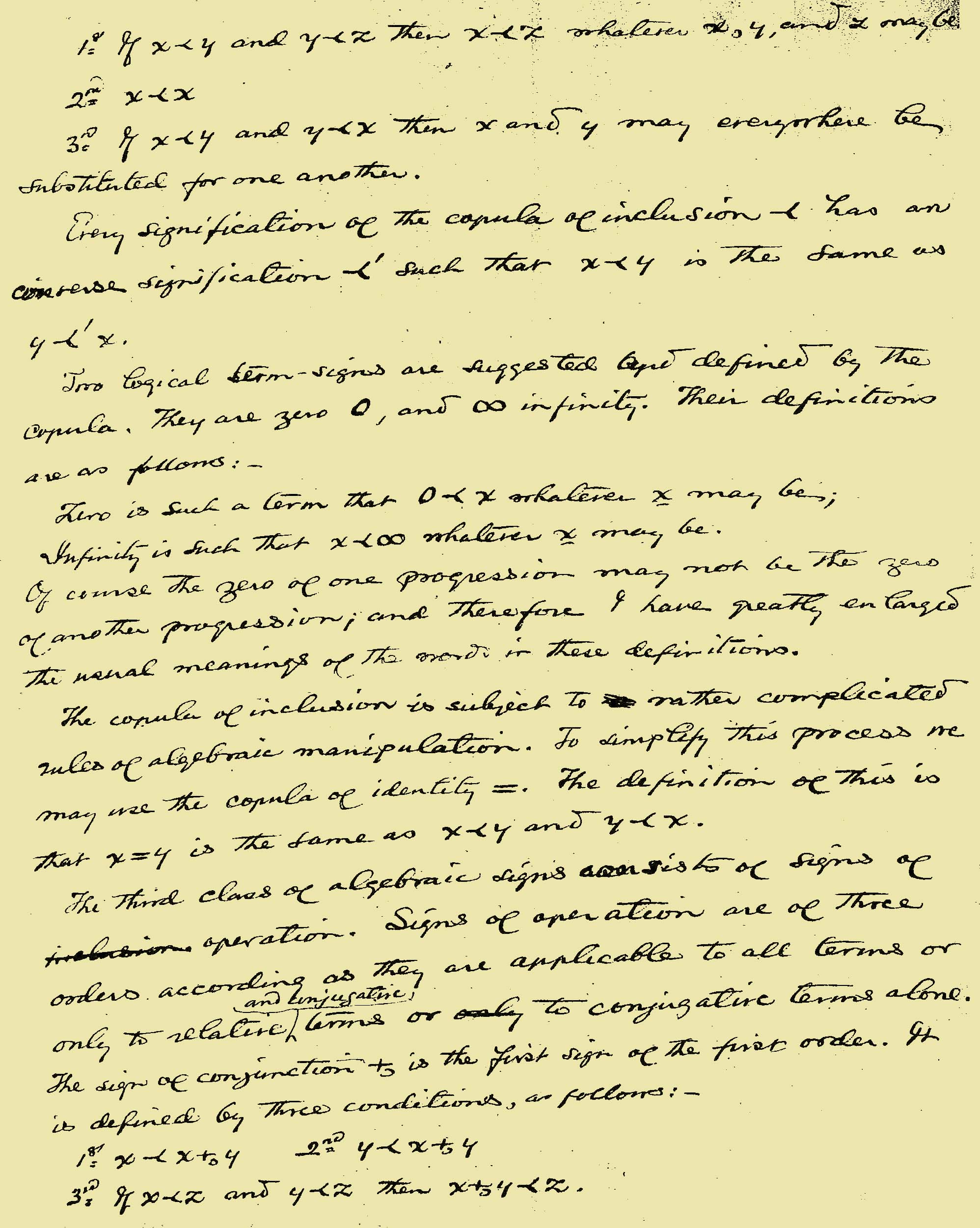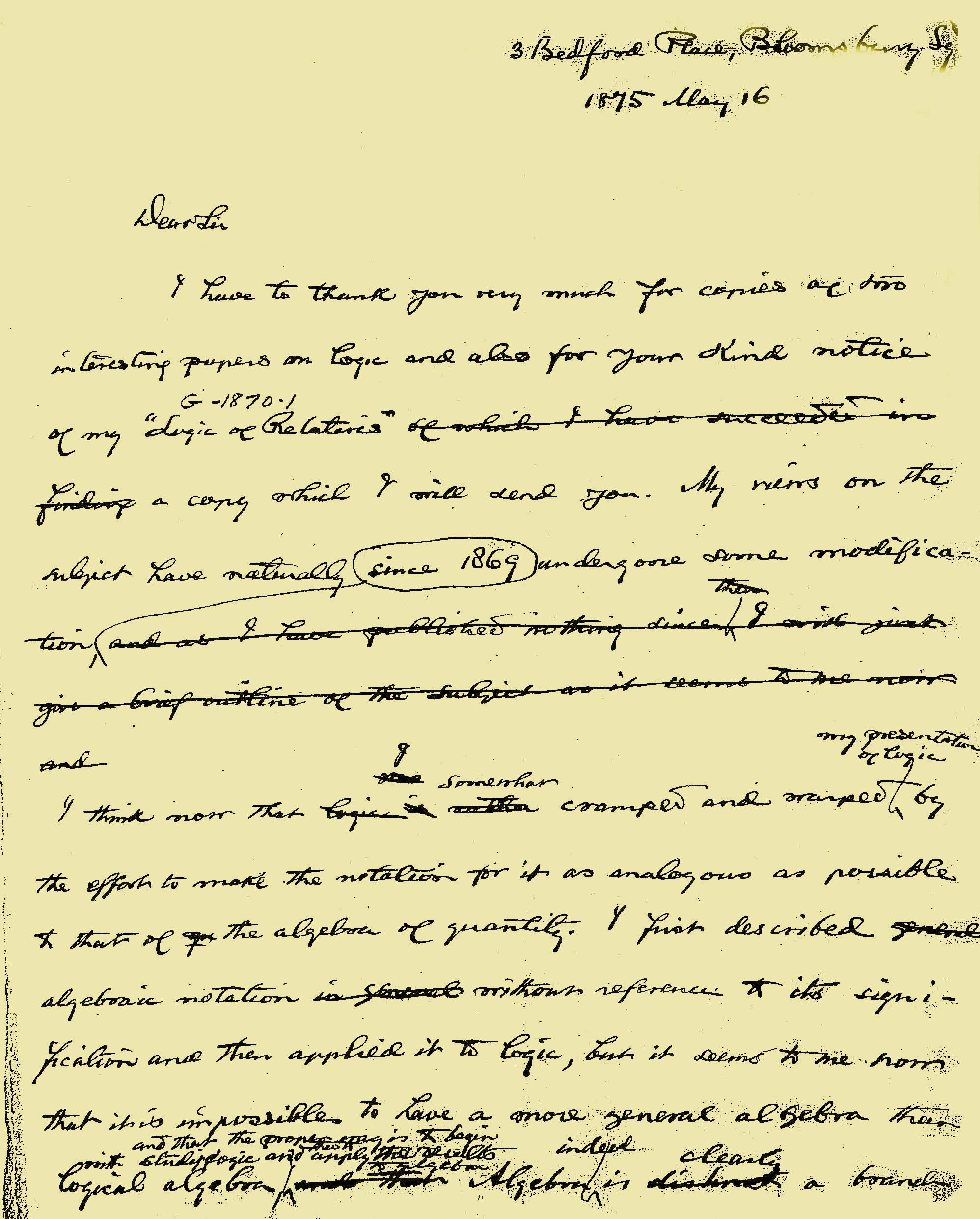
|
3 Bedford Place, Bloomsbury Sq. Dear Sir
I have to thank you very much for copies of two interesting papers on logic and also for your kind notice of my "Logic of Relatives" [of which I have succeeded in finding] a copy of which I will send you. My views on the subject have naturally undergone some modification since 1869 [and as I have published nothing since then I will just give a brief outline of the subject as it seems to me now and] I think now that I somewhat cramped and warped my presentation of logic by the effort to make the notation for it as analogous as possible to that of the algebra of quantity. I first described algebraic notation without reference to its signification and then applied it to logic, but it seems to me now that it is impossible to have a more general algebra than logical algebra and that the proper way is to begin with studying logic and then to apply the results to algebra. Algebra indeed is clearly a branch
|
